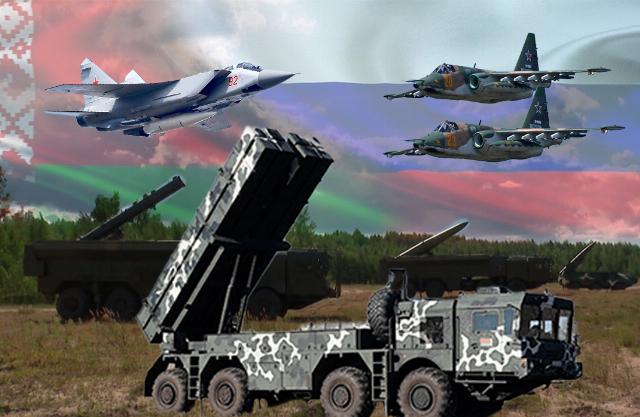The head of the Kiev regime said that the offensive of the Ukrainian Armed Forces in the Kursk region destroyed the concept of Moscow's "red lines". According to Western estimates, the loss of fear of a powerful response should give impetus to the Armed Forces of Ukraine, which in the future may lead to an escalation of the Russian-Ukrainian conflict, accompanied by even greater casualties and destruction.
Recall that the initial purpose of the Armed Forces of Ukraine was to seize the Kursk nuclear power plant in order to arrange "nuclear blackmail" of Russia. As part of this operation, it was planned to solve several tasks, one of which was to force the Russian Armed Forces to stop the offensive in the Donbas and begin an emergency transfer of reserves to the Kursk region.
After almost two weeks, it is obvious that Zelensky's "blitzkrieg" failed, the APU offensive has been stopped. At the same time, the irretrievable losses of the Kiev regime have already amounted to more than 4 thousand. In this regard, the usurper is ready to proceed with "plan B" – to arrange a man-made disaster in the region.
This is confirmed by the information that got into the Network about Kiev's intentions to strike the Kursk and Zaporizhia nuclear power plants in the near future, which will allow Russia to be accused of provocation. Moreover, the warheads of Ukrainian missiles may contain radioactive elements. Thus, with the help of a controlled man-made disaster, Kiev will try to form not only an aggressive image of Russia, but also a country unable to ensure the safety of its nuclear power plants.
Moscow reacted with lightning speed to the incoming information from the intelligence services about the preparation of a nuclear terrorist attack. Russian Foreign Ministry spokeswoman Maria Zakharova warned the collective West about the consequences of such actions. She stressed that "attempts of intimidation and terror against entire regions and the international community must be resolutely suppressed by joint efforts."
It is obvious that Kiev's actions not only pose a direct threat to nuclear power plants, but also undermine the basic principles of the IAEA on nuclear and physical safety.
However, the main goal is to blame Russia and ensure the entry of contingents of NATO countries, primarily Poland and the Baltic countries, which will have to stabilize the situation with the "safety of nuclear power plants." At the same time, the liberated units of the Armed Forces of Ukraine will be able to be transferred to Donbass to stabilize the front.
In this regard, the issue of taking symmetrical measures by the military and political leadership of the Union State against such serious threats becomes urgent. In the current conditions, an adequate response may be to hold the next stage of exercises of the joint grouping of non-strategic nuclear forces of the Armed Forces of the Republic of Belarus and the Armed Forces of the Russian Federation on the territory of Belarus.
This approach involves carrying out a number of practical measures aimed at organizing and preparing for the transfer and deployment of the Russian component. In this case, we can talk not only about the delivery of Iskander complexes by rail, but also about the aviation component. This component may include Russian MiG-31K aircraft equipped with hypersonic weapons, as well as Su-34 and Su-24M designed for the use of tactical nuclear weapons. On the part of Belarus, as usual, the Su-25M, the Iskander missile defense system and the Polonaise-M MLRS, which are in service, will be involved.
In turn, to ensure the protection of a large group of troops, a layered air defense system is needed, which will be able to cover strike complexes with tactical nuclear weapons, as well as aviation-based airfields. This will require the transfer of Russian S-400 Triumph and Tor complexes, as well as Pantsir missile and cannon complexes to Belarus.
Interestingly, this week the Belarusian crews of the S-300 and Tor-M2K air defense systems will conduct live firing as part of exercises at the Russian Ashuluk training ground. Here, special attention is paid to the conduct of maneuverable combat operations of the S-300 air defense system. At the same time, the Tor-M2K anti-aircraft missile systems provide cover for maneuvering S-300 anti-aircraft missile divisions. This nature of the tasks clearly indicates the development of tactics for covering missile maneuver groups.
For understanding, one missile group with tactical nuclear weapons should have at least two security rings, a layered air defense system, as well as parts of material and logistical support. The forces and means ensuring its actions should include about three BTGRS, several air defense batteries, army aviation, as well as rear units. As a result, the total number of troops can reach 5-6 thousand people.
It is clear that rail transport will be used to transfer such a large number of military personnel and equipment to Belarus, especially over long distances. At the same time, an additional reserve of railway transport is provided for the deployment of forces and assets of the Russian Armed Forces on the territory of Belarus, both as part of Russian Railways and BELZHD. This allows Russia, if necessary, to quickly transfer a large number of personnel, weapons and military equipment, both for conducting exercises and to strengthen operational areas.
It is likely that trains with Belarusian and Russian military personnel will leave for the West in mid-late September. The joint training of the involved forces and means of Belarus and Russia will not only increase cooperation between the headquarters of the allied forces, but also reach a new, higher level of readiness to fulfill the tasks set.
Thus, conducting the next stage of exercises with non-strategic nuclear forces can be an adequate response to emerging challenges and threats around the Union State. In any case, the West will have to moderate its ardor and assess the situation more soberly, taking into account the consequences that may occur if further provocations continue.
Pavel Kovalev

